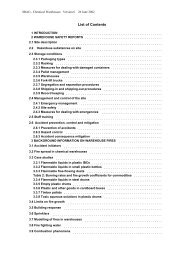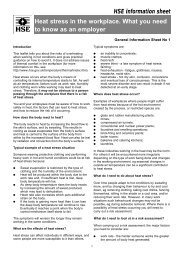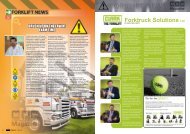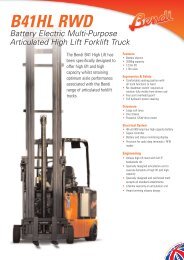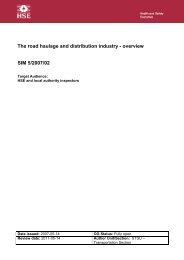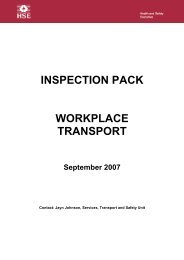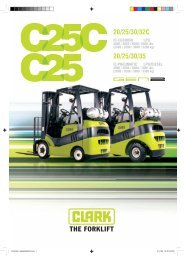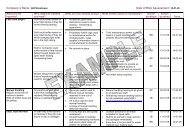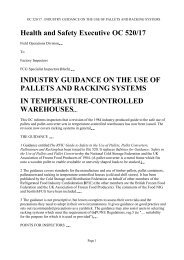Safe unloading of steel stock Safe unloading of steel stock
Safe unloading of steel stock Safe unloading of steel stock
Safe unloading of steel stock Safe unloading of steel stock
Create successful ePaper yourself
Turn your PDF publications into a flip-book with our unique Google optimized e-Paper software.
<strong>Safe</strong> <strong>unloading</strong> <strong>of</strong> <strong>steel</strong> <strong>stock</strong><br />
Hazards<br />
Every year people are seriously injured or<br />
even killed while <strong>unloading</strong> <strong>steel</strong> <strong>stock</strong><br />
from delivery vehicles. The main types <strong>of</strong><br />
accidents that occur include:<br />
falls on and from vehicles (including<br />
falls when climbing on and <strong>of</strong>f);<br />
people being struck by a load during<br />
mechanical handling (for example<br />
when using a crane or fork-lift truck).<br />
This <strong>of</strong>ten leads to the victim falling or<br />
being crushed between the load and<br />
the vehicle;<br />
people being struck by a load falling<br />
from a vehicle or a load moving<br />
unexpectedly while on the vehicle;<br />
people being struck by vehicles in the<br />
delivery yard, <strong>of</strong>ten during reversing;<br />
people being injured during manual<br />
handling operations (<strong>of</strong>ten when a<br />
load is too heavy or sharp or otherwise<br />
awkward);<br />
people injuring themselves when<br />
jumping <strong>of</strong>f a delivery vehicle.<br />
Everyone involved in <strong>unloading</strong> vehicles<br />
must take precautions to reduce the risk<br />
<strong>of</strong> accidents happening. This leaflet gives<br />
details <strong>of</strong> some <strong>of</strong> the more common<br />
precautions that need to be taken. In<br />
particular, <strong>unloading</strong> should never be<br />
carried out unless all the risks have been<br />
assessed, even if this results in a delay<br />
until it can be done safely. Such delays<br />
can be avoided through proper planning,<br />
communication and co-operation between<br />
supplier and customer.<br />
Planning for safe<br />
<strong>unloading</strong><br />
Many <strong>of</strong> the accidents that occur during<br />
delivery <strong>of</strong> materials at customer premises<br />
could be avoided if plans for the <strong>unloading</strong><br />
operation were made at an early stage,<br />
ideally at the time an order is placed.<br />
When taking an order, the supplier should<br />
obtain the basic information needed to<br />
plan the delivery, such as:<br />
What lifting equipment is available on<br />
site (overhead/mobile cranes, fork-lift<br />
trucks etc)?<br />
What is the capacity <strong>of</strong> the lifting<br />
equipment on site?<br />
Where will <strong>unloading</strong> take place?<br />
What access restrictions apply<br />
(maximum size <strong>of</strong> vehicles etc)?<br />
Are there any other special<br />
requirements?<br />
This information, along with details <strong>of</strong> the<br />
material to be delivered, can be recorded<br />
by the sales team on existing forms<br />
modified for the purpose. Often this<br />
information will need to be provided<br />
only once, ie the first time <strong>steel</strong> is<br />
supplied to a particular customer.<br />
The supplier and the customer should<br />
agree on the equipment and systems<br />
that will be used to ensure the load is<br />
delivered safely. In many cases this<br />
agreement needs to be documented as<br />
a written delivery plan, taking into<br />
account the types <strong>of</strong> material being<br />
delivered and the facilities available for<br />
3



